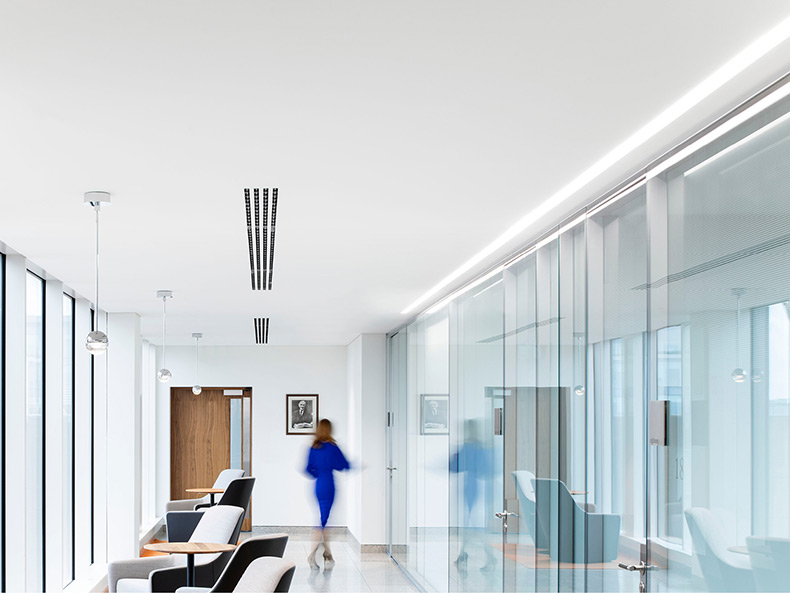

COVID-19: Remote Hearings – your questions answered

Click here to view this briefing in PDF format.
While still in the early stages, we expect that this new way of hearing cases will continue for some time, and may indeed outlive the pandemic that accelerated its introduction.
Full remote hearings are new for all involved – judges, solicitors, barristers, Courts Service staff and parties to litigation. Everyone is adapting to the change and mindful of the challenges involved, but there has been a huge effort across the legal community to get remote hearings up and running to ensure that parties to litigation can continue to have their cases determined and their rights vindicated within a reasonable time.
Here we answer some commonly asked questions about remote hearings, how they work, what is involved and what parties to litigation need to know.
What cases are being heard remotely?
Certain High Court, Court of Appeal and Supreme Court cases which the courts consider are suitable for remote hearing:
High Court
The High Court is currently hearing suitable cases remotely, including certain cases in the Commercial Court, insolvency matters (both corporate and personal), judicial review applications (including Strategic Infrastructure challenges), injunctions, and certain cases in the Chancery and Non-Jury lists. Cases that involve witness testimony are not currently being heard either on a remote basis or otherwise.
Court of Appeal/Supreme Court
The majority of Court of Appeal and Supreme Court cases are capable of being heard remotely. At call-over hearings, judges are ascertaining whether parties are agreeable to a remote hearing. Guidance recently published by the Court of Appeal states that while the Court will have due regard to any objection to an appeal being heard remotely, it may nevertheless direct that the appeal proceed remotely.
Some cases continue to be heard in the normal way with the judge and the parties being physically present in the courtroom. For example, in the High Court, three courtrooms are available each day for remote hearings and seven courtrooms are available for physical hearings. Courtrooms have been adapted to ensure those present can adhere to physical distancing guidelines, but we expect that in order to further safeguard the health of all those involved in the court process, the Courts Service will increase the number and types of cases being heard remotely in the coming weeks and months.
Will my legal team be able to effectively present my case on a remote basis?
Yes. While this is a new way of working and everyone has to adapt, our experience is that cases can be dealt with as efficiently and as effectively on a remote basis as they would in a physical courtroom, provided that all the necessary preparation is carried out and provisions put in place in advance of the hearing.
How do remote hearings work?
- Technology: The remote hearing will take place via the video conferencing technology used by the Courts Service, Pexip VMR (virtual meeting room). In advance of the hearing, all participants will be provided with log in details to the Pexip VMR which allows them to enter the remote hearing.
- The Court and the Legal Teams: As matters stand, the Registrar will, in all cases, be in the courtroom for the duration of the hearing, with some or all other participants logging in remotely. The judge(s) may be logged in remotely or may be in the courtroom with the registrar, observing physical distancing guidelines. The parties’ legal teams (solicitors and barristers) will be connected remotely, from their respective homes or offices.
- Other Participants: Your legal team will contact you in advance of the hearing to discuss how you can participate in the proceedings and how you can communicate with them during the proceedings. Subject to the court’s approval, you will be given login details to the court’s virtual meeting room in advance of the hearing. Alternatively, you may attend the courtroom in which the registrar is sitting and in which the proceedings will be aired, as always, observing physical distancing requirements. Media and other members of the public may also attend the physical courtroom in which the proceedings will be aired, should they wish to do so.
How do I prepare for a remote hearing?
If you are attending the case remotely, at a minimum a stable internet connection will be required in addition to a PC, laptop, tablet or mobile phone with a camera and microphone installed. Where possible, it is preferable to have access to two screens: one to view the proceedings, and a second to view any documents presented during the course of the hearing.
Some useful points to consider:
- Decide where to base yourself – You will need a private space with no distractions and no prospect of being interrupted. Ensure your camera is not positioned near a window which might cause a glare. Check the camera angle and the background view. The Court will very often ask non-speaking participants in a court hearing to turn off their camera for the duration of the proceedings, but it is nonetheless important that you are located in an appropriate place with no distractions.
- Check your set-up – Check the necessary hardware and software 1 – 2 days before the hearing i.e. test your internet connection and check that you can access the VMR and that you are comfortable using the technology. Do this again on the morning of the hearing, 1-2 hours before it begins. Familiarise yourself with the mute function on your microphone and the functionality to turn on/off your video settings.
- Download all relevant documents/details to your device – Save documents locally and keep relevant contact details nearby to facilitate access during the hearing.
What do I need to remember during the remote hearing?
The most important thing to remember during a remote hearing is that, irrespective of where you are logging into the hearing, you are a party to, or participating in, formal court proceedings. All court etiquette should be observed and adhered to and all participants should conduct themselves as they would in a physical courtroom setting.
In addition, participants to a remote hearing should ensure that there are no interruptions or distractions during the course of the hearing. Some particular points to remember:
- Close all applications on your device(s) that are not related to the hearing and ensure that all notifications are silenced;
- Log into the remote hearing at least 10 minutes before it is scheduled to begin to avoid any last minute access issues;
- Keep your microphone on mute unless directed otherwise. It is particularly important to ensure that your microphone is muted and your camera turned off before giving your solicitor or counsel instructions during the course of the remote hearing;
- Do not record the hearing. This is strictly prohibited. As with physical hearings, only the Courts Service is authorised to record the hearings. Any party who wishes to obtain a copy of the recording may apply to the Court to do so;
- When the hearing ends, make sure that you are fully logged out of the virtual meeting room before discussing the hearing with your legal team or others.
Remote hearings have proven to be effective and efficient in ensuring the continued operation of the Courts and the administration of justice during the COVID-19 crisis. As parties and the courts become more familiar with the process and the technology involved, we expect to see a greater uptake in the number and scope of cases being heard remotely, with the ultimate result that such hearings will form a core part of the legal landscape going forward.
We would like to thank Jamie Brislane, associate, and Katie Rooney, trainee, for their contribution to this article.
